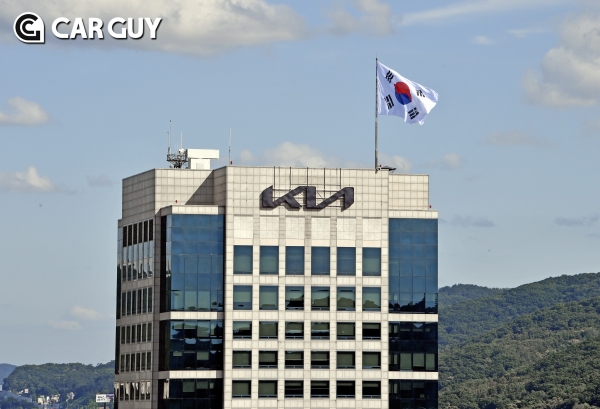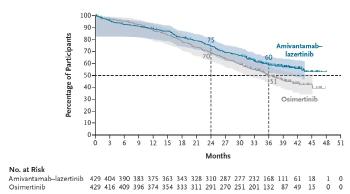The impact of tariffs from the United States..Kia Q2 Operating Profit Down 24% To KRW 2.7648 Trillion
Jul 25, 2025
|
Kia said it sold 814,888 units (2.5% year-on-year↑) in the second quarter of 2025 (based on wholesale), and its business performance was ▲ 29.3496 trillion won in sales (6.5%↑) ▲ 2.7648 trillion won in operating profit (24.1%↓) ▲ 3.22 trillion won in ordinary profit (25.7%) ▲ 2.2682 trillion won (23.3%↓) including non-pear shares. (IFRS consolidated standards)
Headquarters in Yangjae-dong, Kia
"Although U.S. tariffs began to affect in earnest, sales increased year-on-year due to increased global hybrid demand and new car launches," a Kia official said regarding the second quarter's performance.
"Although there was a profit or loss impact from the entry into force of U.S. tariffs, we were able to maintain a solid profitability fundamentals due to major market volume growth, higher value-added vehicle-oriented ASP, and favorable exchange rate effects," he said.
■ Second quarter 2025 (April-June) earnings results
Kia's sales in the second quarter of 2025 increased 2.5% year-on-year to 814,888 units in the ▲ global market, including 142,535 units, up 3.2% year-on-year in ▲ Korea, and 672,353 units overseas, up 2.3% year-on-year. (Based on Wholesale)
Despite the impact of K3 single production last year, domestic sales increased 3.2% year-on-year due to the effects of new cars such as small pickup Tasman and EV4, which began full-scale sales in the second quarter of this year.
Excluding Western Europe, where sales fell slightly due to the model's aging despite the EV3's good performance, the U.S., which has continued to grow 4.1% due to the Carnival Hybrid and K4 launched last year, and India, which recorded a 9.5% growth rate due to the effect of new Ciroz cars launched at the beginning of the year, recorded a 2.3% increase in sales.
In the second quarter, sales increased by 6.5% year-on-year to KRW 29.3496 trillion due to ▲ Increasing sales of hybrid and electric vehicles in major markets such as Korea, the U.S., and Europe ▲ Increasing sales price per unit (ASP) due to continued sales of high value-added vehicles ▲ Favorable exchange rate effect.
Despite the expansion of sales and favorable exchange rate effects, the cost-of-sales ratio rose 4.1 percentage points from the same period last year to 80.0%, due to the impact of tariffs and increased incentives. The sales management ratio remained similar to the same period last year, with an improvement of 0.3 percentage points from the previous year to 10.6%.
Second-quarter operating profit fell 24.1% year-on-year to KRW 2,764.8 trillion due to ▲ expansion of major market sales ▲ improvement of product added value ▲ favorable exchange rate effect ▲ U.S. tariffs that took effect in April ▲ increased incentives due to increased competition in major markets. The operating margin was 9.4 percent.
■ Sales of eco-friendly cars in the second quarter of 2025 (April-June)
Kia's sales of eco-friendly cars in the second quarter rose 14.0% year-on-year to 185,000 units based on increased demand for hybrid and electric vehicles in the U.S. and Western Europe. (Based on retail, rounded up in hundred)
The share of eco-friendly car sales among all sales also reached 23.4%, up 2.0 percentage points from the previous year.
By type, 111,000 ▲ hybrids (23.9% year-on-year↑) ▲ 160,000 plug-in hybrids (16.8%↓) ▲ 59,000 electric vehicles (8.3%↑) were sold.
The share of eco-friendly car sales by major markets was ▲ 46.5% in Korea (39.9% in the same period last year), ▲ 42.9% in Western Europe (38.6% in the same period last year), ▲ 16.9% in the United States (17.9% in the same period last year).
■ Future prospects and plans
Kia predicts that the difficult business environment will continue, including concerns over a real economic downturn due to uncertainties in the global trade environment such as tariffs, expanding geopolitical risks, and shrinking consumer purchasing sentiment.
To overcome this business environment, Kia plans to continue to expand sales using hybrids such as Sportage, Sorento, and Carnival in the domestic market and continue sales momentum by establishing a full lineup of electric vehicles through the launch of new EV5 and PV5 cars in the second half of the year.
In the United States, the company plans to respond flexibly to market demand and regulatory changes through flexible production operations, while continuing to increase profitability by expanding the hybrid supply of volume RV models such as Sportage, Sorento, and Carnival.
In Europe, the company plans to strengthen its image as a leading electric vehicle brand in the EV market, which is intensifying sales competition by focusing on EV3, EV5, and PV5 in the European market, including EV4, which is scheduled to be released in the third quarter.
In India, the company plans to accelerate the establishment of an electric brand by launching a local strategic electric vehicle, the Karens Clavis EV, this month, while expanding its dealer network and solidifying its 300,000-unit sales system.
In addition, Kia plans to expand its market dominance through continuous growth strategies such as completing its full lineup of popularized EVs such as ▲EV2, EV3, EV4, EV5 and adding new hybrid lineup such as ▲Telluride and Seltos ▲PBV and entering new segments such as pickup, despite the challenging market outlook due to intensifying competition and economic downturn in the second half of the year.
This article was translated by Naver AI translator.














